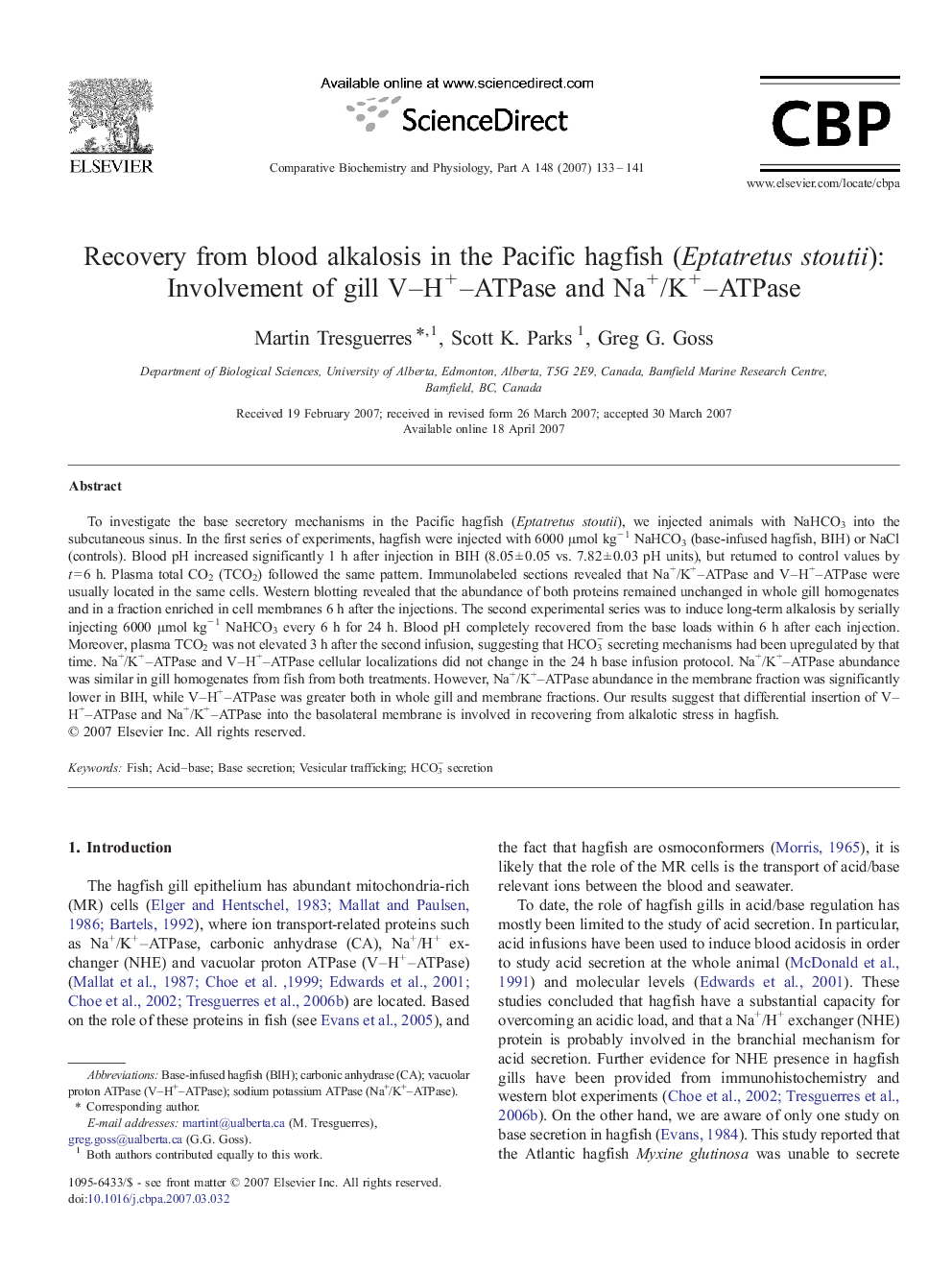| Article ID | Journal | Published Year | Pages | File Type |
|---|---|---|---|---|
| 1974753 | Comparative Biochemistry and Physiology Part A: Molecular & Integrative Physiology | 2007 | 9 Pages |
To investigate the base secretory mechanisms in the Pacific hagfish (Eptatretus stoutii), we injected animals with NaHCO3 into the subcutaneous sinus. In the first series of experiments, hagfish were injected with 6000 μmol kg− 1 NaHCO3 (base-infused hagfish, BIH) or NaCl (controls). Blood pH increased significantly 1 h after injection in BIH (8.05 ± 0.05 vs. 7.82 ± 0.03 pH units), but returned to control values by t = 6 h. Plasma total CO2 (TCO2) followed the same pattern. Immunolabeled sections revealed that Na+/K+–ATPase and V–H+–ATPase were usually located in the same cells. Western blotting revealed that the abundance of both proteins remained unchanged in whole gill homogenates and in a fraction enriched in cell membranes 6 h after the injections. The second experimental series was to induce long-term alkalosis by serially injecting 6000 μmol kg− 1 NaHCO3 every 6 h for 24 h. Blood pH completely recovered from the base loads within 6 h after each injection. Moreover, plasma TCO2 was not elevated 3 h after the second infusion, suggesting that HCO3− secreting mechanisms had been upregulated by that time. Na+/K+–ATPase and V–H+–ATPase cellular localizations did not change in the 24 h base infusion protocol. Na+/K+–ATPase abundance was similar in gill homogenates from fish from both treatments. However, Na+/K+–ATPase abundance in the membrane fraction was significantly lower in BIH, while V–H+–ATPase was greater both in whole gill and membrane fractions. Our results suggest that differential insertion of V–H+–ATPase and Na+/K+–ATPase into the basolateral membrane is involved in recovering from alkalotic stress in hagfish.
